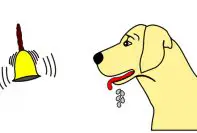Conditioning Learning is a process in psychology that is used to enforce new behavior in an organism. There are two major types of conditioning learning.
These forms of conditioning learning have both similarities and differences. Their main purpose is same, which is acquiring new behavior. But the process of how that is acquired is quite different.
Differences between Classical Conditioning and Operant Conditioning
| Classical Conditioning | Operant Conditioning |
|---|---|
| Classical conditioning is a learning process first discovered by the Russian physiologist Ivan Petrovich Pavlov in the early 1900s | Operant Conditioning is the term coined by B.F. Skinner in 1938. |
| The theory of Classical Conditioning deals with the learning process leading us to gain a new behavior via the process of association. | Operant conditioning is a form of learning which explains the relation of behaviors on certain rewards and consequences. |
| Internal mental thoughts and brain mechanisms play a huge role in associative learning. | The study of the theory only deals with expressible behaviors and not any internal mental thoughts and brain mechanisms. |
| Classical Conditioning works by pairing involuntary response with stimulus. After which, unconditioned response becomes conditioned response. | Operant Conditioning works by applying two major concepts, Reinforcements and Punishments, after the behavior is executed, which causes the rate of behavior to increase or decrease. |
| Pavlov’s dog experiment is a base for the establishment of classical conditioning theory and its concepts. | Skinner’s Skinner box experiment with a rat is the base for operant conditioning theory and its concepts. |
Similarities
Along with the differences there are also various similarities between these two forms of conditioning learning. The major similarity lies in its application. Both these conditioning learning techniques are used to teach a new behavior to an organism. Despite different techniques, the major goal remains the same.
Both of these techniques have certain limitations when applying it in real life. These techniques are also applied unknowingly. For instance, a teacher punishing a student is an example of operant conditioning. On the other hand, we call our pets with a certain signal before we treat them with food. The dog then associates the timing of food with the signal, which is an example of classical conditioning.





